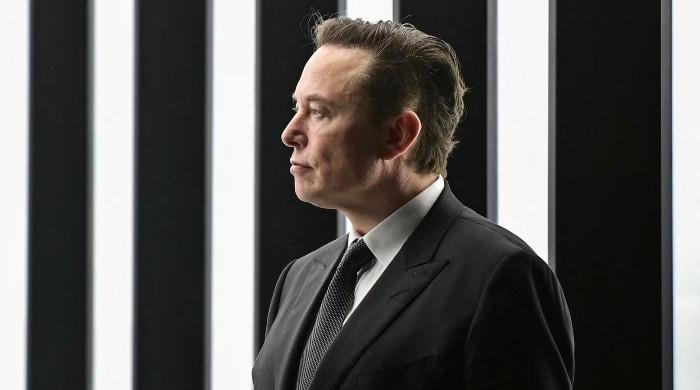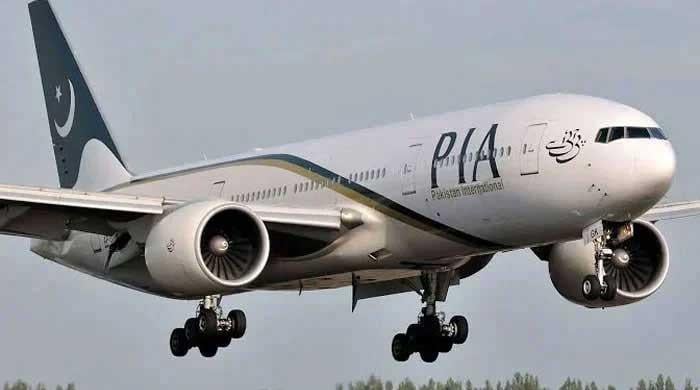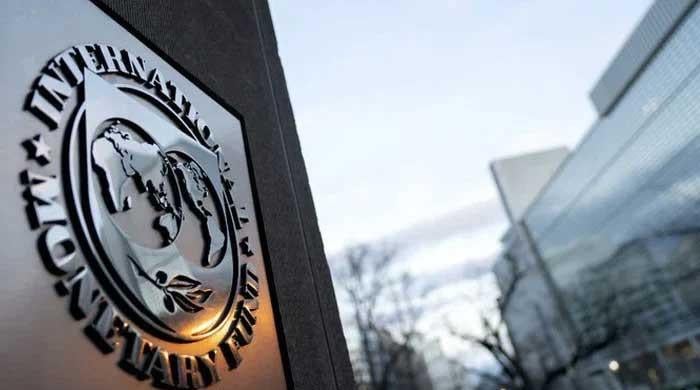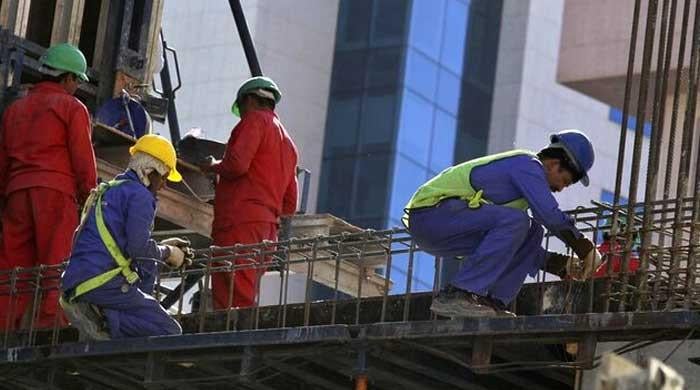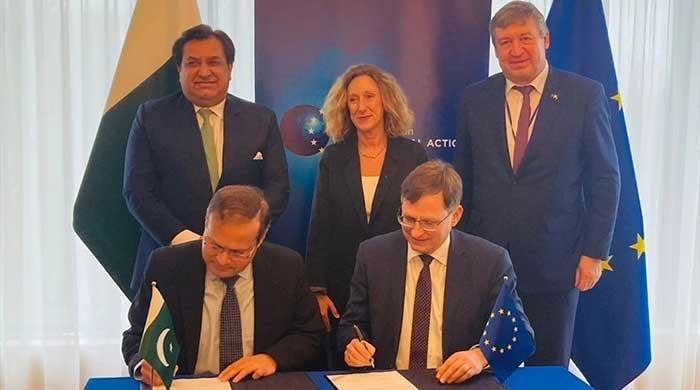CPEC: Pakistan requests China to remove removing stumbling blocks in $12bn projects
Khalid Mansoor says government actively working to pay outstanding dues of Rs250 billion to Chinese companies
November 10, 2021
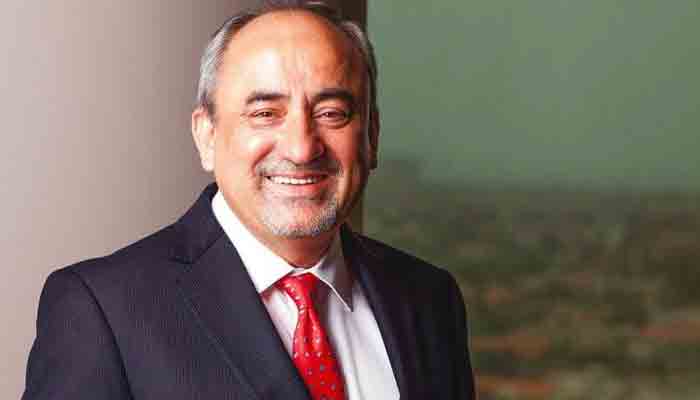
ISLAMABAD: Islamabad has made a request to Beijing to remove the stumbling blocks in the way of the completion of approximately $12 billion projects under the banner of the China Pakistan Economic Corridor (CPEC).
This was shared by Special Assistant to the Prime Minister on CPEC Khalid Mansoor while talking to a select group of reporters on Tuesday.
Khalid Mansoor said Pakistan would be willing to get a mix of Chinese and US dollar loans from Beijing to execute the projects under CPEC.
"We have sought Chinese support for six energy and one infrastructure projects – the Mainline (ML-1) scheme of the Pakistan Railways. The cost of the energy projects is $5 billion and the minimum estimated value of the ML-1 scheme is $6.8 billion,” he said.
Mansoor said he had written two letters to the vice-chairman of the National Development and Reforms Commission (NDRC) of China, urging him to remove barriers in the completion of these projects.
Pakistan, he said, was waiting for a term sheet from China for the finalization of the loan agreement, adding that Islamabad would demonstrate flexibility on the interest rates, foreign currency and tenor of the loan amounts.
Pakistan had earlier requested to get the loan at 1% in US currency but now we seems willing to secure the loan at an interest rate of around 2% in an equal mix of Chinese and US currency, he added.
The government had approved the 1,700-kilometre ML-I project at $6.8 billion, which Mansoor said was on the lower side. Pakistan has offered the Chinese to arrange all-Chinese competitive bidding for the ML-I project and if the bids are higher than $6.8 billion, the government stands ready to revise the PC-I of the ML-1 project.
He said the military has offered to provide complete security to the project.
“We are trying to save the Gwadar power plant, Karo power plant, Kohala power plant from the adverse impacts of delay in power purchase payments to Chinese sponsors,” the PM’s aide said.
“They (Chinese) are seeking sureties that these new power plants are also not stuck up in the circular debt,” he added.
Mansoor said the government was actively working to pay outstanding dues of Rs250 billion to Chinese companies on account of power purchase payments that are stuck in the form of circular debt.
The government has been paying KIBOR plus 2% to the sponsors of Chinese power plants on the amount that has been delayed beyond a period. The good thing is that the Chinese have not yet invoked the guarantees, which show that they are still willing to work in Pakistan.
"Expensive electricity is better than no electricity" was the slogan at that time and the country was sustaining losses equal to 2.25% of the GDP, said the PM’s aide.
The Chinese initially laughed at Pakistan’s plan to end loadshedding through the Gaddani power park and setting up coal-fired power plants. China then gave an alternate strategy and one by one dropped the Gaddani power park and two Punjab-based coal-fired power plants i.e. Rahim Yar Khan power plant and Muzaffargarh power plant.
Irrespective of what people say about infrastructure, the lives of people have become comfortable due to mass transport projects, said Mansoor.
The CPEC is a quid pro quo. Pakistan went to China to seek help to remove road and infrastructure bottlenecks and in return, China asked for road access to connect its western part with the Gwadar Port, said Mansoor.
Some investment to the tune of $53 billion had been envisaged under the CPEC and Pakistan has fairly dealt with phase-I of the CPEC, said the PM’s aide.
So far, new electricity generation capacity equal to 5,300 MW has been added and 880-kilometre-long transmission line has been laid down. About 3,500 MW capacity power projects were still under implementation. Another 4,144 MW capacity projects were at the planning stage, he added.
It is Pakistan’s chance to industrialise and the key is the development of Special Economic Zones under the CPEC, he added.
Under CPEC, nine Special Economic Zones (SEZs) and a Free Zone at Gwadar have been planned and four SEZs and Gwadar Free Zone are being developed on priority, he added.
Some Chinese investors have shown their interest in the proposed SEZs in Pakistan, he said and added that now the focus would be shifted to IT, agriculture and industrial cooperation.
Originally published in The News




